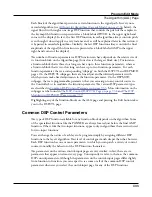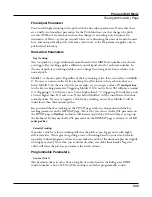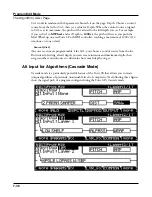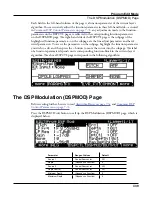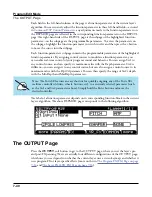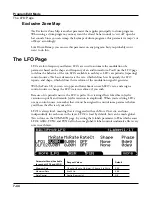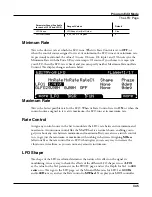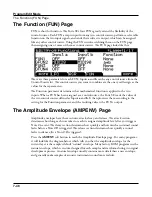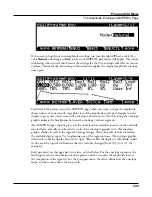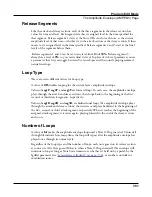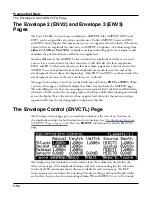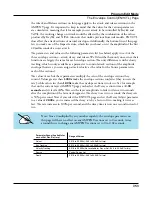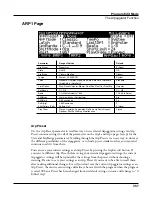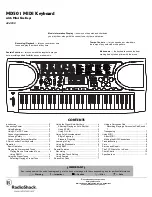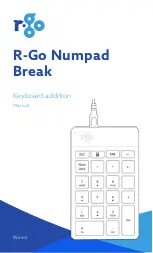
Program Edit Mode
The ASR Page
7-46
and you’ll hear the LFO’s rate change when you move its Mod Wheel. Select different LFO
Shapes and check out the effect on the pitch.
LFO Phase
Use this parameter to determine the starting point of the LFO’s cycle. One complete cycle of
the LFO is 360 degrees. 0 degrees phase corresponds to a control signal value of 0, becoming
positive. Each 90-degree increment in the phase represents a quarter-cycle of the LFO.
When an LFO is local, the phase parameter gives you control over the starting point of the
LFO for each note (for example, you could make sure every vibrato started below the pitch
you played instead of at the pitch you played). The LFO’s phase also affects global LFOs,
although it’s often indistinguishable, since global LFOs start running as soon as the program
containing them is selected, even if you don’t play any notes.
The ASR Page
ASRs are three-section unipolar envelopes—attack, sustain, and release. The Forte SE’s ASRs
can be triggered by a programmable control source, and can be delayed. ASR1 is always
a local control. ASR2 is local by default, but becomes global if the Globals parameter on
the COMMON page is set to On. ASRs are frequently used to ramp the depth of pitch or
amplitude in a vibrato or tremolo, enabling delays in those effects. The ASR page consists of
two rows of five parameters, one row for each of the ASRs.
Parameter
Range of Values
Default
Trigger
Control Source List
Off
Mode
Normal, Hold, Repeat
Normal
Delay
0 to 30 seconds
0 seconds
Attack
0 to 30 seconds
0 seconds
Release
0 to 30 seconds
0 seconds


